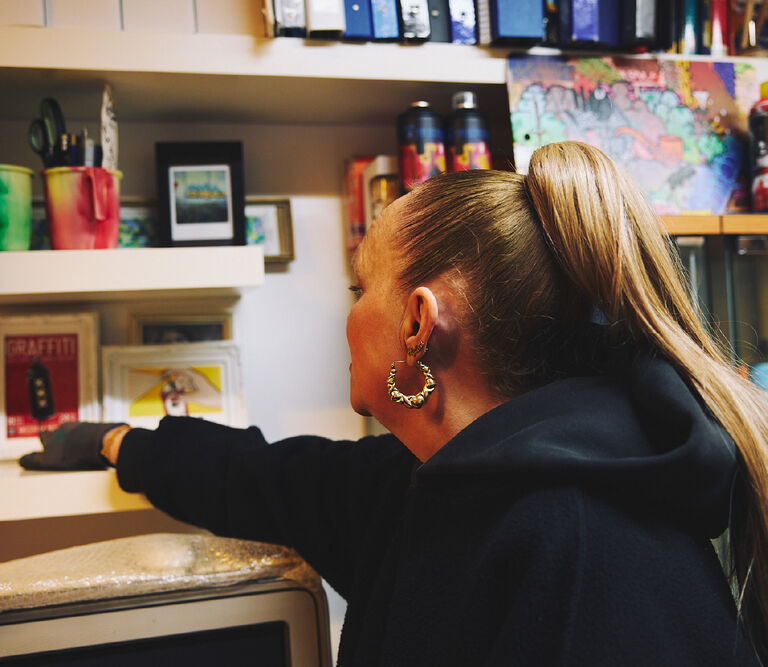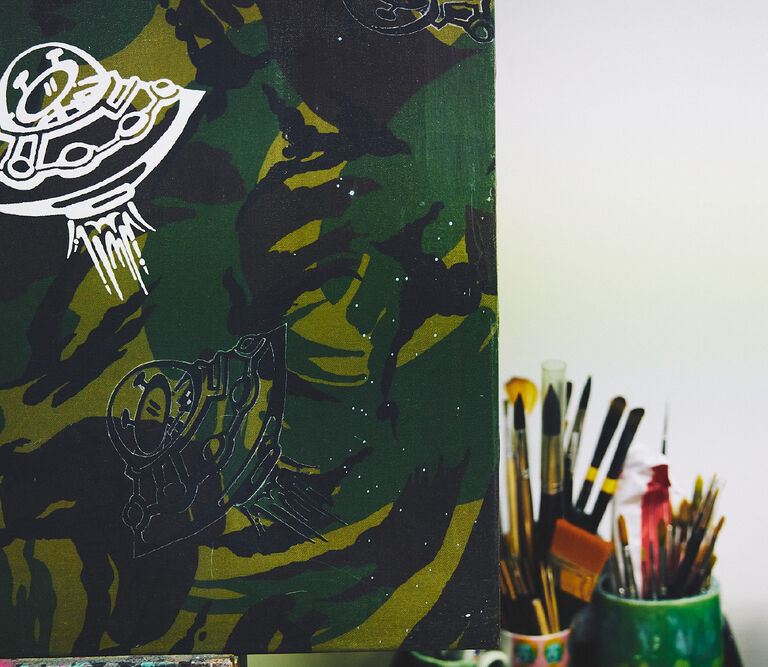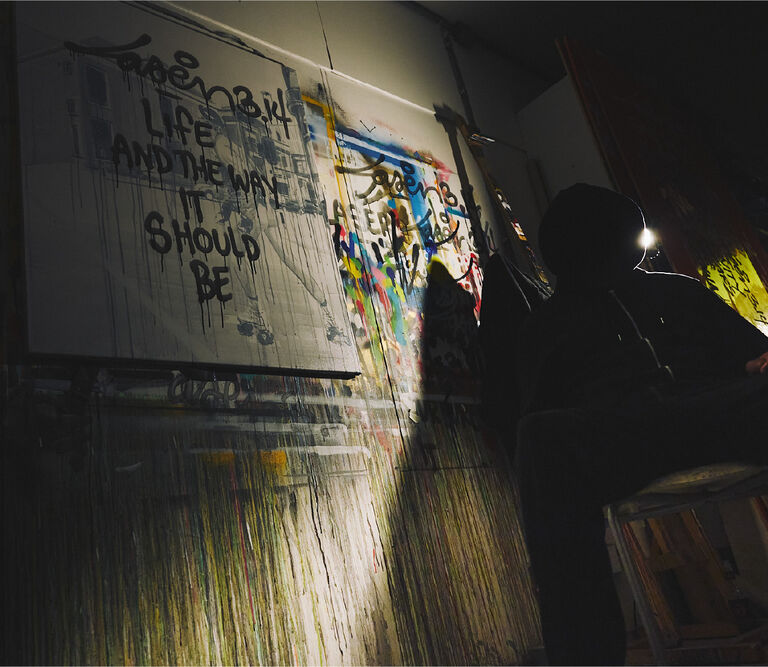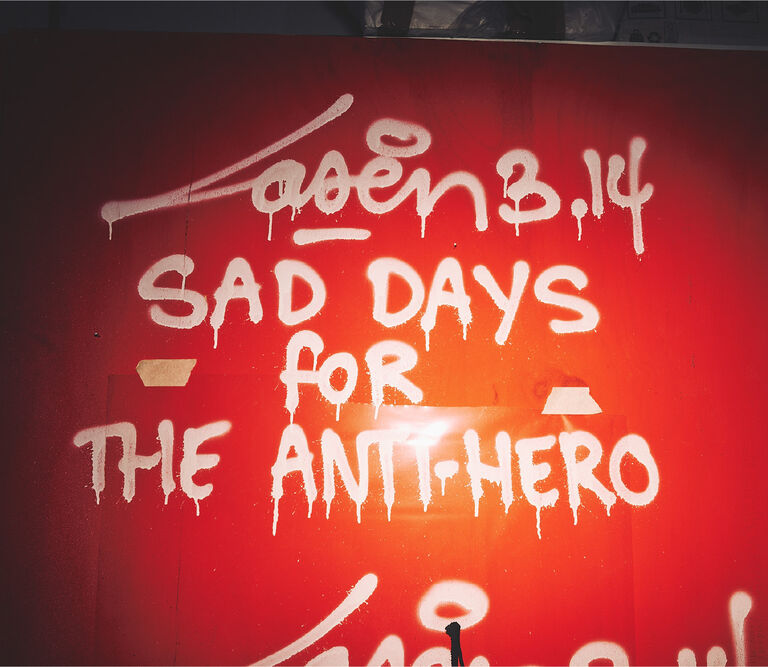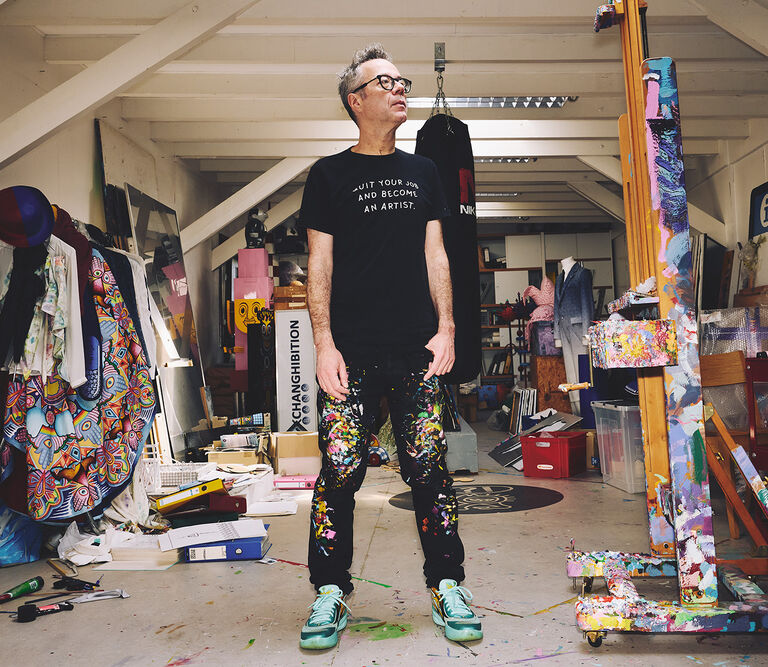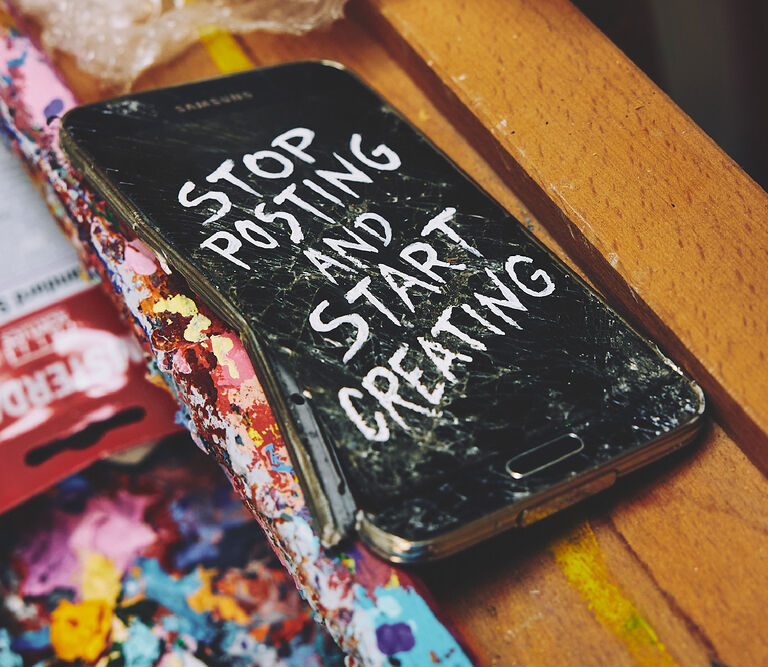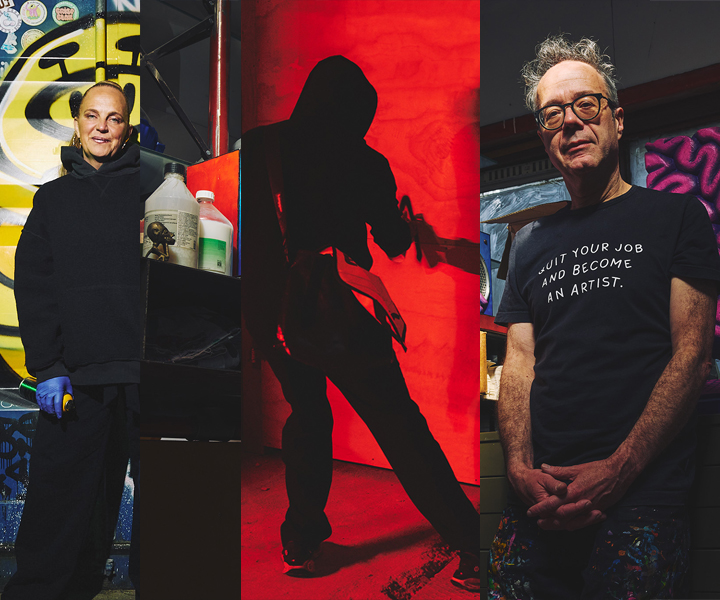Together with creative agency Revelator and three icons from Amsterdam’s underground scene — Dadara, Mick La Rock, and Laser 3.14 — we proudly present LET’S CELEBRATE: a collection in honor of Amsterdam’s 750th anniversary.
Discover more about the artitst and their stories.
Mick La Rock (Aileen Middel, Groningen, 1970) is one of Europe’s first and most well known female graffiti artists. Inspired by the traditional ‘New York School’ graffiti lettering style, she started writing her name MICKEY in 1983.
'For this collection, I chose to honour my city in the purest form of graffiti: a traditional style writing piece and a graffiti-tagging UFO.
My UFOs once invaded the Bijlmer for years. Growing up in Groningen, Amsterdam was always where inspiration lived — graffiti, hip hop, and that unmistakable ‘BIG CITY’ energy. As a teen, I’d travel to Amsterdam to buy spray paint colours we didn’t have up north and i would visit iconic graffiti spots like the tram bridge at Mr. Visserplein and the Vondelparkbrug. One night, passing the Bijlmer flats under a starlit sky, I felt drawn to the vastness and raw spirit of Amsterdam Zuid-Oost. Years later, I made it my home — finding love, community, and my place as an artist. The Bijlmer’s concrete, culture, and freedom shaped my identity. It’s the closest I ever felt to New York — the birthplace of graffiti and hip hop. '
Laser 3.14 has been creating poetry on the streets for over 24 years and is inextricably linked to Amsterdam and urban art. His work is recognised worldwide for his bold statements about politics, pop culture and everyday life. With a spray can he creates short, socially critical street poems.
'Amsterdam Forever works for me as a slogan and a statement — reflecting my deep love and lifelong bond with the city. This city will always be a part of
me. Until my final breath. I also painted one of Amsterdam’s most iconic elements: het Amsterdammertje. By transforming the top of this classic city icon into the nozzle of a spray can, I created a direct link to the art form that has shaped me since the early 1980s: graffiti and street art.'
Dadara started as an artist at the beginning of the nineties designing flyers and record covers, and doing live-paintings forthe then burgeoning electronic dance scene. This, as well as projects such as the crying Dadababy speakers and the Greyman Statue of No Liberty, marked the start of an impressive career as a painter, installation- and performance artist,
designer, and cartoonist.
'As a kid, I dreamed of designing record sleeves. That dream seemed lost when CDs took over—until house music exploded: illegal raves, warehouses buzzing with energy, and vinyl made a comeback thanks to DJs spinning their 12-inches.
While studying in Rotterdam, I danced in the RoXY and couldn’t wait to move to Amsterdam. In the early '90s, that dream came true. I designed sleeves for Outland Records, created flyers for parties, and hosted my own nights.
That raw, groundbreaking era—full of beats and creativity—is deeply tied to Amsterdam for me. And that energy lives on in my work.'
